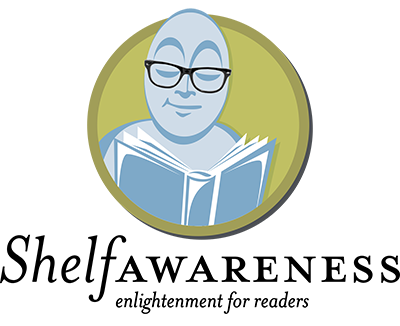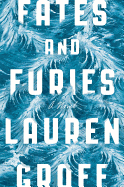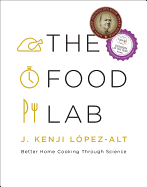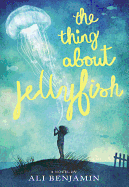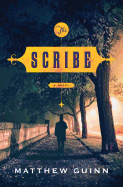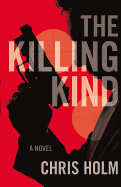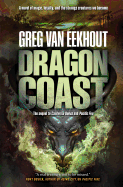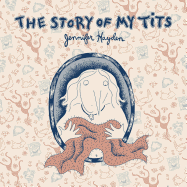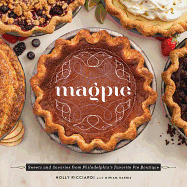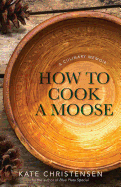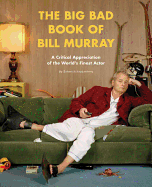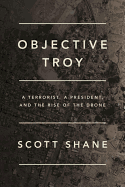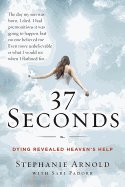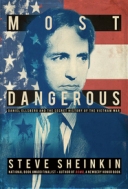Tuesday, September 29, 2015
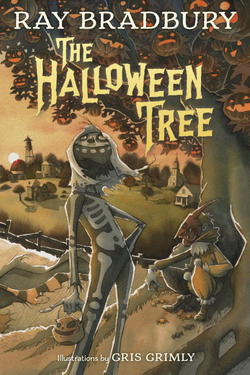 Rejoice, Halloween people! There's a 2015 edition of Ray Bradbury's 1972 classic The Halloween Tree (Knopf), one of the very best Halloween books ever written for eight-year-olds or adults, newly illustrated by the much-admired Gris Grimly. Gather the kids around on an October night and read (out loud, if possible) the deliciously lyrical, globe-circling, time-traveling tale of Mr. Moundshroud and eight trick-or-treating boys in search of their missing, maybe stolen friend Pipkin... "And all the deep dark wild long history of Halloween waiting to swallow us whole!"
Rejoice, Halloween people! There's a 2015 edition of Ray Bradbury's 1972 classic The Halloween Tree (Knopf), one of the very best Halloween books ever written for eight-year-olds or adults, newly illustrated by the much-admired Gris Grimly. Gather the kids around on an October night and read (out loud, if possible) the deliciously lyrical, globe-circling, time-traveling tale of Mr. Moundshroud and eight trick-or-treating boys in search of their missing, maybe stolen friend Pipkin... "And all the deep dark wild long history of Halloween waiting to swallow us whole!"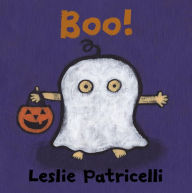 It's easy to creep out toddlers, so Leslie Patricelli gently eases them into Halloween with the endearing board book Boo! (Candlewick). Here, a tiny trick-or-treating ghost gradually works up to ringing the doorbell solo. As it should be, the pressing questions of the day are "How should we carve our jack-o'-lantern?" and "What should I be?"
It's easy to creep out toddlers, so Leslie Patricelli gently eases them into Halloween with the endearing board book Boo! (Candlewick). Here, a tiny trick-or-treating ghost gradually works up to ringing the doorbell solo. As it should be, the pressing questions of the day are "How should we carve our jack-o'-lantern?" and "What should I be?"
2015 brought a fine harvest of Halloween picture books, including The Fun Book of Scary Stuff by Emily Jenkins, illustrated by Hyewon Yum (Frances Foster/FSG) in which a boy makes a list of everything that frightens him (monsters, ghosts, witches, trolls) and in a funny cartoon-bubble dialogue with his dog, they determine none of them is all that scary. (On witches: "Aren't you afraid of them?" asks the boy. "Not if they've got food," says the dog.) Don't miss the winsome Leo: A Ghost Story by Mac Barnett, illustrated by Christian Robinson (Chronicle) or the rhyming Scarecrow Magic by Ed Masessa, illustrated by Matt Myers (Orchard/Scholastic).
Teen readers have tricky treats in store with British artist Andi Watson's graphic novel Princess Decomposia and Count Spatula (First Second/Macmillan) and Irish author Moïra Fowley-Doyle's The Accident Season (Kathy Dawson/Penguin), a hypnotic, poetic novel about a family's dark secrets that have them on edge, particularly in October. --Karin Snelson, Halloween person, children's editor, Shelf Awareness
Fates and Furies
by Lauren Groff
Fates and Furies opens on a beach, where young newlyweds Lotto and Mathilde are clutching each other furiously, stripping down behind the dunes to consummate their marriage. Like so many moments in the cinematic novel, it's an image that brands itself upon the brain, wavering in the distance between reader and narrator like a mirage. Pan out and the vision falters; the more the reader sees, the more unknowable these characters become.
Fates and Furies concerns itself principally with this liminal space of the individuals and their marriage, the precipitous balance between information shared and withheld. After the omniscient glimpse at Lotto and Mathilde's coupling, the narrator follows Lotto, whose unhappy Florida childhood and boarding school adolescence culminate in a stint at Vassar as the resident theater ham. There, he meets Mathilde: quiet, mysterious, a devastating wraith. Together, they balance artistic ambitions (often thwarted) with the daunting reality of the electric bill.
From the get-go, Lotto's dog-like bravado and need to be liked proves irksome, and when the novel switches after a bombshell plot twist to Mathilde's savvier perspective, it's a welcome shift. The rosy glow of Lotto's memories are suddenly recast in bare light. Mathilde's realism proves a stark contrast to her husband's romanticism, bordering at times on callousness, but inhabiting two such different minds hammers home Lauren Groff's (Arcadia) elegant examination of marriage's false promises. One can't, after all, ever know someone entirely, and in Groff's capable hands, Lotto and Mathilde prove rife with mysteries beneath their glossy surfaces. --Linnie Greene, freelance writer
Discover: An insightful, suspenseful portrait of a marriage and its secrets from the perspective of its participants, written in wry, lyrical prose.
Mystery & Thriller
The Scribe
by Matthew Guinn
Using Atlanta's 1881 International Cotton Exposition as the backdrop to his second novel, Matthew Guinn (The Resurrectionist) expertly weaves fact and fiction to create this gripping historical mystery.
Georgia's capital is recovering and finding its way in the post-Civil War era; the exposition is intended to show the world that the South is transforming and using technology to more efficiently handle cotton production. However, a serial killer is striking in Atlanta. If word gets out, it could foil the exposition.
Police chief Vernon Thompson believes the killer is an insider, so he needs an investigator separate from his department, someone he can trust to solve the case quickly and quietly. Thompson summons his friend and disgraced former detective Thomas Canby back to the city and pairs him with Atlanta's first African-American officer, Cyrus Underwood. Together the two outcasts face down a killer who may just embody pure evil.
In his author's note, Guinn admits to taking a few liberties with history's timeline for the sake of his story, but these small creative licenses take nothing from the excitement and suspense of the novel. The atmosphere is as vibrant as the brilliant new electric lights adorning the exposition facilities. It illuminates the dynamic and eclectic cast--from the city's wealthy industrialists to its colorful outliers--as well as the advances and disgraces of the era. Finally, the deeply philosophical theme of good and evil gives the reader meaty food for thought.
Fast-paced, intense and as relevant to today as the 19th century, The Scribe is noteworthy indeed. --Jen Forbus of Jen's Book Thoughts
Discover: In Matthew Guinn's rich historical mystery, a vicious killer threatens to topple Atlanta's International Cotton Exhibition--a display of the city's post-Civil War advancement.
The Killing Kind
by Chris Holm
Hit man Michael Hendricks stares through his rifle's scope at a man in Miami. Crack. Hendricks's target is rubbed out. Which makes Hendricks the bad guy, right? Wrong. Hendricks, the protagonist of Chris Holm's The Killing Kind, makes his living as a hit man who kills only hit men. As a former U.S. military operative presumed dead after a mission went awry in Afghanistan, he's specially suited for his work. When he hears a contract has been taken out on someone, he contacts the target and offers his services to remove the threat--but only if the target is someone worth saving.
The Council, an organization of representatives from every crime family in the world, isn't having it. It hires a hit man named Engelmann to stop Hendricks from messing with the group's killing plans. Also on Hendricks's trail is FBI Special Agent Charlotte "Charlie" Thompson, who has a hard time convincing her colleagues that Hendricks even exists. Hendricks is very good at his job, but can he elude his pursuers, who also excel at theirs?
Holm (The Collector Trilogy) is good at his job, too. His prose is lean, his pacing brisk, the suspense high and his plot unpredictable. He encourages the reader to care about characters that aren't normally sympathetic, and if they're not likable, they're at least amusing. There's plenty of violence and dark humor, but heart as well, with Hendricks holding a candle for a love he can't forget. He's not just the killing kind; he's also the romantic kind. --Elyse Dinh-McCrillis, blogger at Pop Culture Nerd
Discover: A hit man kills other hit men while being pursued by a hit man--and the FBI.
Science Fiction & Fantasy
Dragon Coast
by Greg Van Eekhout
In this sequel to California Bones and Pacific Fire, Greg Van Eekhout has written another captivating and fast-paced narrative that places Daniel and his friends in a race to find Sam, Daniel's adopted son. Though he was consumed by the Pacific firedrake dragon created by Daniel's half-brother, Sam's magic and his essence still live inside the dragon, and Daniel must find a way to release him before the Hierarch of Northern California turns the dragon into a weapon of mass destruction.
In order to succeed with his plan, Daniel must impersonate his half-brother Paul in front of the many who knew him in Northern California, including old lovers and mentors, as he competes for the position of High Grand Osteomancer of the Northern Kingdom. Magical hijinks, thefts and double crosses are interwoven with political intrigue and the highs and lows of personal relationships as Daniel and company search for the one object that will help Sam, the axis mundi bone.
For those familiar with the story, the characters, plot and descriptions of magical bones that can transform a person once ingested are a fun continuation of an already enjoyable fantasy ride. For those who haven't discovered this author's series, beginning with California Bones is a better bet than starting with Dragon Coast. Although the author does a decent job of referencing past plotlines, any new reader will enjoy far more entertainment by starting at the beginning of this complex fantasy, an investment well worth the time and energy. --Lee E. Cart, freelance writer and book reviewer
Discover: The third volume of a series set in futuristic Los Angeles, a world of magic, dragons and epic power struggles.
Graphic Books
The Story of My Tits
by Jennifer Hayden
After trying her hand at fiction writing and children's book illustration, Jennifer Hayden turned to comics in her 40s as a medium for personal expression. When Underwire, her first autobiographical comics collection, was published in 2011, it was hailed as a notable achievement and excerpted in the Best American Comics of 2013. Hayden was lauded as a fresh voice willing to tackle seldom-covered subjects with unabashed enthusiasm, humor and pathos. The Story of My Tits, Hayden's first self-contained graphic novel, is an even more stunning achievement--an emotionally gripping and self-deprecating, yet good-natured tale of cancer survival and a celebration of all things inherently female.
Hayden divides her memoir into 14 chapters, each headlined with titles that allude to how the "tit" will relate to the specific stage of her life: No Tits, Tits in Jersey, Tits al Fresco, Tender Tits, UnTITled. She begins her story in the first couple of chapters as the wistful, "flat as a board" youngster who views her tits as a way to relate to her mother and sister and whose lack of cleavage serves to stir feelings of insecurity and doubt. By the age of 15, Hayden has started to blossom, and with the arrival of those coveted tits comes her sexual awakening and the corresponding issues of body image and physical imperfections. Just as Hayden learns to appreciate her small-breasted existence, she is confronted with the double whammy of her mother's breast cancer and the impending failure of her parents' marriage, along with the stresses of college, post-graduation career choices and intimate relationships. These devastating events and anxieties shake the foundations of her self-identity and become the source of much internal conflict. It is finally through her relationship with her boyfriend's family that Hayden comes to terms with and embraces the possibilities of blended families; this provides her with the courage to resolve her own issues and approach marriage and motherhood with open arms--until the fateful day, at the age of 43, when her mammogram comes back positive and feels like an unforgiving slap in the face. By the time Hayden learns of her diagnosis, the specter of mortality had haunted her for nearly 20 years, starting with her mother's breast cancer diagnosis and mastectomy days after Hayden's college graduation and the death of her beloved, nonsmoking mother-in-law from lung cancer. Confronted with her own mortality, Hayden comes to understand the conflicts her mother faced, the sacrifices that were made to protect family and what it means to love and be loved in the context of disease.
There is a both simplicity and quirkiness to Hayden's black inked drawings that evoke a child-like sense of vulnerability and wonder and focuses the reader's attention on the riveting storyline. The action moves in a slow, graceful arc chronologically and grows more chaotic with the rickety rollercoaster of stressors Hayden faces at each stage of her life, the lines etching and exposing the raw emotional tapestry of her very being. Hayden doesn’t approach her art as a rough then final draft, subject to endless do-overs in order to achieve perfection; the drawings may not be tidy, but what the reader sees is what Hayden remembers as that snapshot in time, and life is rarely a picture-perfect moment.
Hayden's coverage of the universal themes of suffering and survival, and fear, become as valid for men as they are for women. The men in Hayden's world--her father, husband, brother and friends--are multi-dimensional characters who have their flaws, but who also provide much-needed balance and support for the women in their lives. The mundane details of everyday living move front and center, fodder for Hayden to mine as she pokes fun at herself and those around her, even as mortality threatens to derail a life force cultivated through hard-earned wisdom. For Hayden, breasts are a metaphorical canvas on which to paint an honest and real story of modern womanhood, as she explores her life outside of cancer, and her own maturation during her journey from flat-chested adolescence to busty adulthood, ending with middle age and the loss of the body part that had a history of its own and told so many stories during its lifetime.
By doing what comic book writer Lynda Barry terms "writing the unthinkable," Hayden pulls readers into her own brave, sometimes neurotic, journey as she navigates the difficult twists and hormonal turns of motherhood and cancer. In doing so, The Story of My Tits offers a story of hope and new beginnings, of life after figurative death, and triumph over adversity. This is a landmark work deserving a place in the pantheon of comics artists who have elevated the field to new heights. --Nancy Powell
Food & Wine
The Food Lab: Better Home Cooking Through Science
by J. Kenji Lopez-Alt
Unlike other cookbook staples for home cooks, The Food Lab is about far more than recipes. Where The Joy of Cooking and How to Cook Everything are primarily sets of step-by-step instructions for preparing a variety of dishes, J. Kenji Lopez-Alt has included a mere 300 recipes in his massive book. The rest of the volume is dedicated to exploring the science of food and recipe construction, as well as recommended tools, tricks and techniques.
Lopez-Alt was previously editor of Cook's Illustrated magazine and is now managing culinary director of SeriousEats.com, where he writes "The Food Lab" column on food science. The Food Lab draws on those experiences to offer readers a guide to improved home cooking through scientific understanding. In the introduction, he writes, "Once you understand the basic science of how and why a recipe works, you suddenly find that you've freed yourself from the shackles of recipes."
Though one could dip into and out of each section on a whim, the book's structure allows for cover-to-cover reading--unusual for a cookbook--and the scientific explanations and theories behind each recipe build over the course of the text. Scattered among humorous and engaging anecdotes about his experiences experimenting with food, Lopez-Alt has included asides on techniques and ingredient-specific recommendations.
With a no-fuss, no-frills approach to cooking, The Food Lab promises to become essential for the cookbook shelf, with thoughtful, reasoned explanations for how to make classic American dishes the best they possibly can be. --Kerry McHugh, blogger at Entomology of a Bookworm
Discover: The Food Lab is an invitation to start asking "what's really going on inside your food while you cook it."
Magpie: Sweets and Savories from Philadelphia's Favorite Pie Boutique
by Holly Ricciardi and Miriam Harris
Holly Ricciardi believes that pie is love. An accomplished baker with roots in small-town Pennsylvania and a deep affection for fresh, in-season produce, Ricciardi left her graphic design career to open a pie shop, Magpie, in Philadelphia in 2012. The shop's rotating menu of seasonal offerings has already earned wide acclaim. In Magpie, her first cookbook, Ricciardi shares more than 90 recipes for sweet and savory pies, along with a wealth of baking tips.
Ricciardi begins with a piecrust primer aptly titled "Don't Fear the Piecrust!" She shares the method for Magpie's essential crust, explaining its uses for single- and double-crust pies, lattice-topped pies, mini pies, potpies and quiches. Her informative, no-nonsense directions will give pie novices a confidence boost before they even turn on the oven.
The book's recipes fall into three main categories: fruity pies, creamy pies and savory pies (including quiches and potpies). Ricciardi shares her own twists on classics, such as Lemon Gingersnap Pie and Caramel Apple Pie, before branching out into innovative combinations such as Cafe Mocha Pie, Berry Custard Thyme Crumb Pie and her signature Butterscotch Bourbon Pie. The savory section includes classics such as Quiche Lorraine and inventive dishes such as Smoked Gouda Butternut Squash Pie. Practical baking hints and variations on recipes appear throughout.
Gorgeously illustrated with full-color photographs, Magpie is as informative as it is delicious. The plethora of recipes will have readers reaching for their aprons so they can whip up a pie or two to share with those they love. --Katie Noah Gibson, blogger at Cakes, Tea and Dreams
Discover: A delicious collection of pie recipes from Philadelphia's Magpie bakery, with an excellent piecrust primer and helpful baking tips.
How to Cook a Moose: A Culinary Memoir
by Kate Christensen
Kate Christensen (Blue Plate Special) continues her ventures into the slow-food movement in How to Cook a Moose, splitting her time between the White Mountains of New Hampshire and the hip culinary city of Portland, Maine. Divorced and unhappy living in New York City, she longed "for a new life, somewhere else, somewhere clean and quiet." It was with great fortune that she met a man whose family has a farmhouse in the mountains of New Hampshire, which is where Christensen fell in love again, with life and with food.
From these happy moments of rediscovery, Christensen and her new life partner, Brendan, embark on a culinary odyssey. Christensen's conversational tone leads readers through the happy couple's cooking partnerships in the old farmhouse kitchen, where they whip up chicken stews and meals using the mushrooms they've foraged in the woods behind the house, to the streets of Portland, where they buy an older home together. While their Portland kitchen is being renovated, the couple partakes of Maine's bounty in the many restaurants that have given Portland a culinary reputation on par with any large city in the United States.
Throughout the narrative, Christensen expresses the joy she experiences in eating really local, really fresh foods, made with love and care by people who are sincerely happy. As an added bonus, she includes many recipes--ones she and Brendan have cooked together and ones she has been given by other chefs--which allow readers to capture a bit of the happiness that slowly wafts from these pages like a tantalizing scent. --Lee E. Cart, freelance writer and book reviewer
Discover: Join a gourmand on the streets of Portland, throughout Maine and parts of New Hampshire, savoring the lush local cuisine.
Biography & Memoir
The Big Bad Book of Bill Murray: A Critical Appreciation of the World's Finest Actor
by Robert Schnakenberg
Robert Schnakenberg (The Encyclopedia Shatnerica; Christopher Walken A to Z), has assembled a compendium about the enigmatic and wisecracking actor known as the "Murricane." The Big Bad Book of Bill Murray, equal parts unauthorized biography and critical film history, promises a "contextualized picture of the man, his work, and his unique approach to life" through Murray's thoughts on aging, death, marriage, Mendelian genetics, marijuana, Mr. Magoo and his love of minor league baseball, as well as fresh takes on Murray's well-known comedic successes (Groundhog Day; Caddyshack) and career-redefining moments as "the sad, old man" archetype (Lost in Translation; St. Vincent).
Culled from published media sources and from interviews that Schnakenberg conducted with more than a dozen of Murray's colleagues, associates and high school acquaintances, he manages to paint a fair assessment of Murray as the "rare celebrity who got more interesting--and more mysterious--the longer he was in the public eye" while retaining an aura of deferential, awestruck adoration. Schnakenberg portrays Murray as a man of endless contradictions, who claims not to want to work hard but often does uncredited cameos out of loyalty to a friend, a man notoriously hard to contact but who reemerges to photobomb and crash private parties, which Schnakenberg highlights in sections called "Tales from Murrayland." One gets the feeling that Murray may be too cerebral for mainstream Hollywood, and that a conversation with him could be equal parts illuminating and frustrating, but worth the effort. Stargazing aside, Schnakenberg has written an indispensable pop culture classic that will earn a place alongside the Murricane's greatest works. --Nancy Powell, freelance writer and technical consultant
Discover: A comprehensive compendium on the life and career of the enigmatic and contradictory Bill Murray.
Political Science
Objective Troy: A Terrorist, a President, and the Rise of the Drone
by Scott Shane
In Objective Troy: A Terrorist, A President, and the Rise of the Drone, Scott Shane brings his extensive experience covering terrorism and the intelligence community for the New York Times to bear on the complicated story of U.S. citizen Anwar al-Awlaki and the drone strike that killed him. Shane explains early on why the targeted killing of Awlaki was extraordinary: "at least since the Civil War, he was the first American citizen to be hunted down and deliberately killed by his own government, on the basis of secret intelligence and without criminal charges or a chance to defend himself in court." Shane presents the case with a degree of reportorial objectivity--and, perhaps more impressively, a wealth of footnotes and interviews with figures like Awlaki's father--but he cannot quite hide his distaste for what he characterizes as an extrajudicial killing.
For better and for worse, Objective Troy can seem less like a cohesive book than a series of interconnected investigative pieces. Shane is not as adept at wrangling the unruly mess of recent history into a coherent narrative as some other journalists. However, Shane excels at explaining the steps that Awlaki took along the path to radicalization, the behind-the-scenes legal maneuvering that provided justification for the killing, the perils and advantages of drone warfare and the complicated political situation in Yemen that allowed Awlaki to hide there for years. Objective Troy is a valuable addition to the growing War on Terror corpus. --Hank Stephenson, bookseller, Flyleaf Books
Discover: A well-researched survey of the events leading up to the drone strike that killed Anwar al-Awlaki.
Body, Mind & Spirit
37 Seconds: Dying Revealed Heaven's Help
by Stephanie Arnold and Sari Padorr
Emotional ups and downs are considered the norm when pregnant, but Stephanie Arnold knew the terrifying premonitions she kept having, of dying while delivering her second child, went far beyond anything she had ever experienced before or even heard of. Fortunately, she was persistent in discussing these haunting dreams and flashes of insight with her family and physicians, and one doctor had the foresight to take precautionary measures, which saved Arnold's life when she suffered a rare amniotic fluid embolism (AFE) in the delivery room.
What unfolds in rapid, tense drama are Arnold's memories of the months preceding the birth, her desperate attempts to find someone who would pay attention to her fears, and the ensuing months of recovery after the AFE. Since AFEs are a leading cause of maternal death around the world, Arnold's story is that of a medical phenomenon coupled with her unusual ability to follow through on the forewarnings she received. Her capacity to recall the events that transpired while she was clinically dead are spot-on with what actually happened as confirmed by doctors. This sent Arnold searching for others who might have had similar premonitions. She found several cases where children and adults had foreseen the future, which gave Arnold "great relief and confirmation that we can in fact sense things before they happen." Arnold's explanations are non-melodramatic, illuminating and edifying, and leave the door wide open for new discussions about souls and where the life force of a person goes when the body dies. --Lee E. Cart, freelance writer and book reviewer
Discover: The unusual circumstances that enabled a woman to predict her own death--and saved her life.
Children's & Young Adult
The Thing About Jellyfish
by Ali Benjamin
Eleven-year-old narrator Suzy Swanson will win readers' hearts as she silently struggles to come to terms with the death of her former best friend, Franny Jackson.
The fact that Franny drowned while on her summer vacation makes no sense to Suzy. Franny had been a strong swimmer since she was five, so Suzy feels certain that an Irukandji jellyfish must be responsible for her friend's death. It's the only plausible explanation. In her scientific pursuit to prove this, she finds a reason to keep going, at the same time shifting from a "constant-talking" girl to a selective mute. Suzy toggles between her present--as a grieving seventh-grader at Eugene Field Memorial Middle School in Massachusetts--and the past: her memories of meeting Franny, becoming best friends, and then it all going terribly awry as Franny develops a crush on Dylan Parker and starts sitting with Aubrey and Mollie at lunch. Suzy is convinced that the Franny she remembers (not this new one with barrettes, "the right hair product" and "deadness" in her eyes) is in there somewhere, if she can only reawaken her. It is a year of loss for Suzy: the death of her parents' marriage, the death of her friendship with Franny and, finally, the death of Franny herself. It's how Suzy insulates herself from all this that drives the story.
In The Thing About Jellyfish, debut author Ali Benjamin shows readers that there are many ways to grieve, and, surrounded by people who love her, that Suzy will get to the other side of her complex emotions. Suzy's ability to articulate the tectonic shifts in her world will help readers get through theirs, too. --Jennifer M. Brown, former children's editor, Shelf Awareness
Discover: A powerful debut novel about an 11-year-old girl who tries to make sense of the death of her former best friend.
Most Dangerous: Daniel Ellsberg and the Secret History of the Vietnam War
by Steve Sheinkin
After winning multiple awards for The Port Chicago 50 and Bomb, Steve Sheinkin turns his talents for nonfiction storytelling to the Vietnam War and the Pentagon Papers in the gripping Most Dangerous: Daniel Ellsberg and the Secret History of the Vietnam War.
Choosing Washington insider-turned-whistleblower Daniel Ellsberg as the focal point for a narrative about the U.S. involvement in the Vietnam War was a genius decision. Ellsberg, the man Henry Kissinger would call "the most dangerous man in America," started high school in Michigan as the Cold War began, went to Harvard, trained as a Marine, worked as a think-tank analyst, then made his way to the Pentagon. His very first day working for Assistant Secretary of Defense John McNaughton, August 2, 1964, was the day the Gulf of Tonkin incident began, precipitating the rapid escalation of U.S. military force in Vietnam. Sheinkin traces Ellsberg’s seven-year transformation from a devoted "cold warrior" into an antiwar activist who spent months stealing and copying the Pentagon Papers (7,000 pages of government secrets) at great personal peril. Readers will also learn about the Watergate scandal and the fumbling antics of G. Gordon Liddy and Howard Hunt, as well as President Richard Nixon's shocking resignation.
Sheinkin makes this behind-the-scenes look at the history of the Vietnam War fresh and accessible through clear writing, a coherent, chronological narrative structure, and black and white photographs. Suspenseful, vivid glimpses into active combat with Marine Lieutenant Philip Caputo and others, dramatic scenes from the "Hanoi Hilton" POW camp, and abundant quotations contribute to the book's energy and immediacy. --Angela Carstensen, school librarian
Discover: Steve Sheinkin shines a light on the Vietnam War and the Pentagon Papers through the life of whistleblower Daniel Ellsberg.

